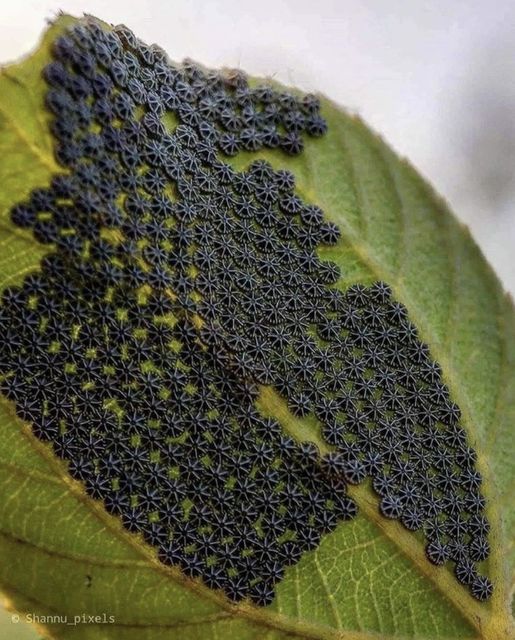Hey there! You’ll often find me in my garden, my sanctuary. I absolutely love gardening. Watching plants grow and thrive brings a unique joy that’s hard to describe. But let’s face it—gardening has its ups and downs. One of the trickiest parts is dealing with pests, especially when you’re unsure which ones are friends and which are foes.

Recently, I stumbled upon a photo on social media that epitomized this dilemma. The image showed a leaf covered with tiny, intricate, black geometric shapes, almost like alien hieroglyphs or an unknown disease. Curious, I had to dig deeper to understand what it was.
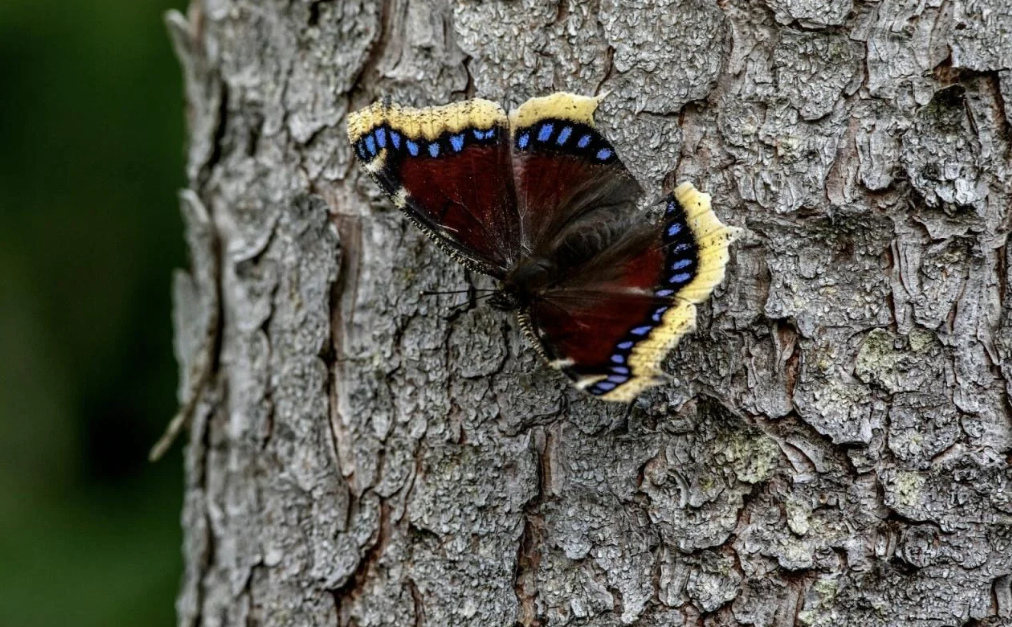
After some research, I found out that these peculiar formations are actually Nymphalis Antiopa butterfly eggs. Also known as the Mourning Cloak butterfly, these insects are fascinating creatures with a unique lifecycle and intriguing behavior.
Let’s start with those eggs. Upon closer inspection, these tiny black shapes appear like delicate lace covering the leaf’s surface. They’re laid in clusters, each egg a miniature geometric marvel. At first, I was apprehensive, thinking, “Will this be a disaster for my garden, or could it actually be good?”
The great news is that Mourning Cloak butterflies are beneficial. While their larvae (or caterpillars) do munch on leaves, they usually prefer trees and shrubs such as willows, elms, and poplars. So, your flower beds and veggie patches are likely safe. Moreover, these butterflies help decompose rotting fruit, aiding in natural waste breakdown.
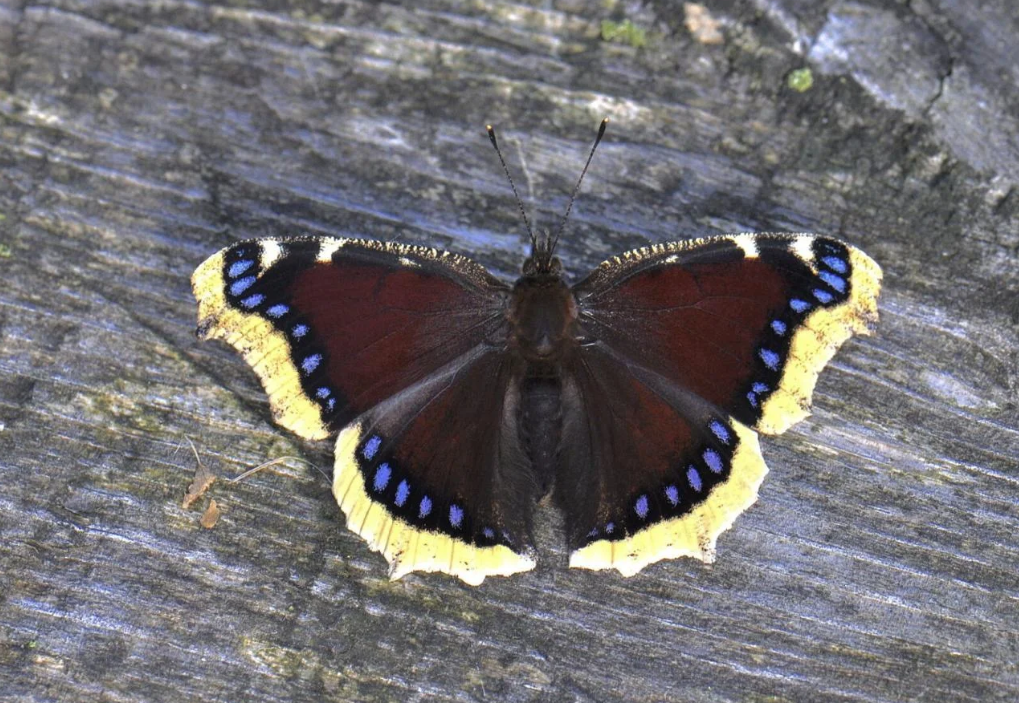
Watching their lifecycle is quite the spectacle. The caterpillars emerge black with tiny white spots and spiny bodies. They go through multiple stages called instars, shedding their skin and growing larger each time.
Once fully grown, the caterpillars seek a secure spot to pupate, spinning a chrysalis where they undergo their transformation. This phase can last from a couple of weeks to several months, depending on the season. When they emerge, they become beautiful Mourning Cloak butterflies with dark, velvety wings trimmed with a yellow border and blue spots.
What’s particularly captivating about these butterflies is their behavior. Unlike many species, they hibernate during winter. They find a snug spot under loose bark, in wood piles, or even in old sheds. Come spring, they’re some of the first butterflies to appear, often seen before flowers bloom, a striking contrast against the stark early spring landscape. This early appearance and their dark wings contribute to their name – Mourning Cloaks.
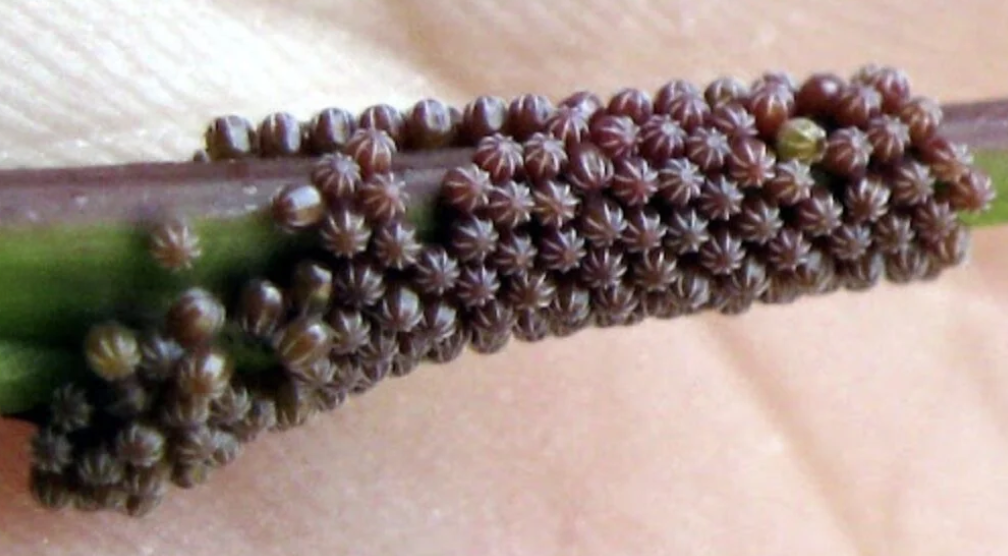
As gardeners, we tend to worry about the immediate impact of insects on our plants, often fearing a caterpillar invasion. However, it’s essential to look at the bigger picture. The Mourning Cloak butterfly is an excellent example of nature’s balance. While the caterpillars will nibble on leaves, they won’t ravage your garden. In fact, nurturing them contributes to a healthier ecosystem.
So, what should you do if you find these eggs or caterpillars in your garden? My advice: leave them be. Enjoy observing their transformation. If you’re concerned about your plants, gently relocate the caterpillars to a tree or shrub where they’ll be happier.
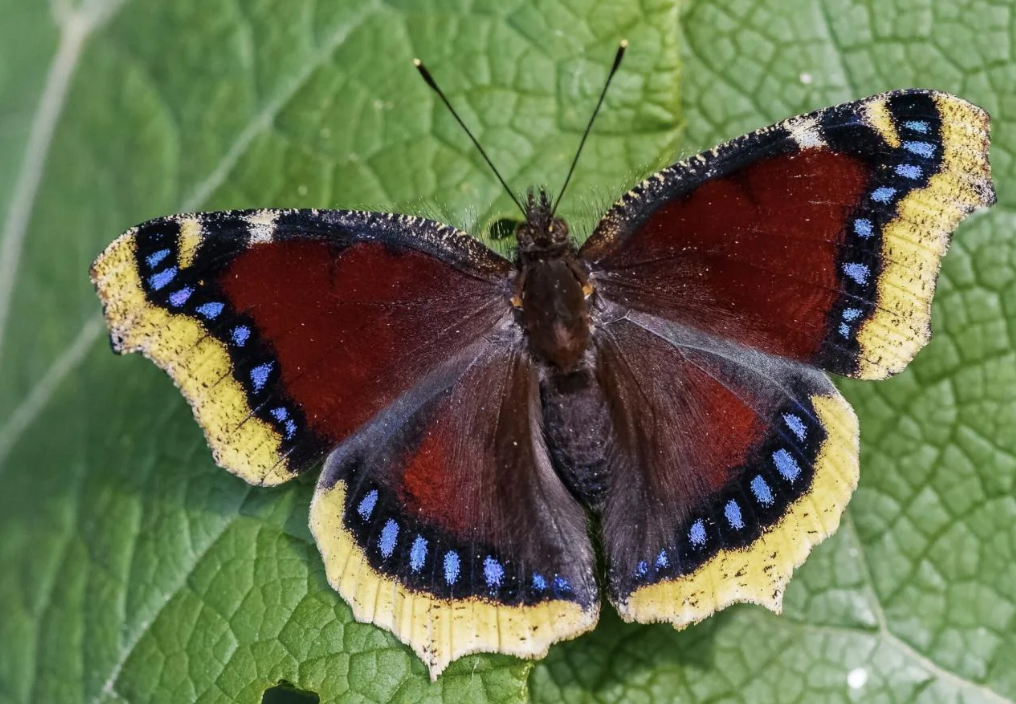
Gardening is all about balance, finding harmony between the plants you cherish and the creatures that live alongside them. The next time you spot something unusual in your garden, take a moment to explore before resorting to insecticides. You might uncover something wonderful, just as I did with the Nymphalis Antiopa butterfly eggs.
In the end, each gardening season is an adventure filled with surprises and challenges. But these experiences make the journey incredibly rewarding.
Happy gardening!
